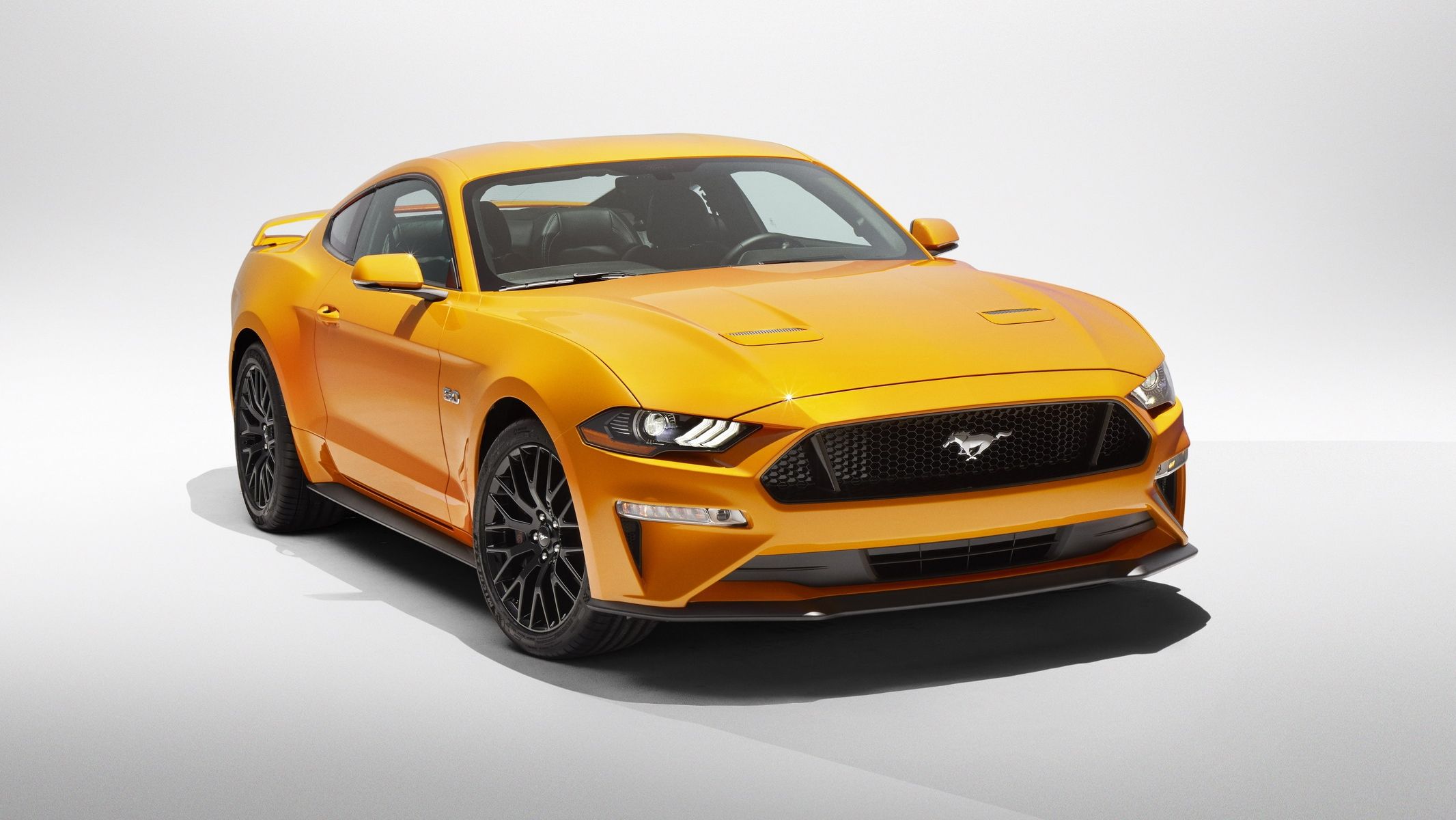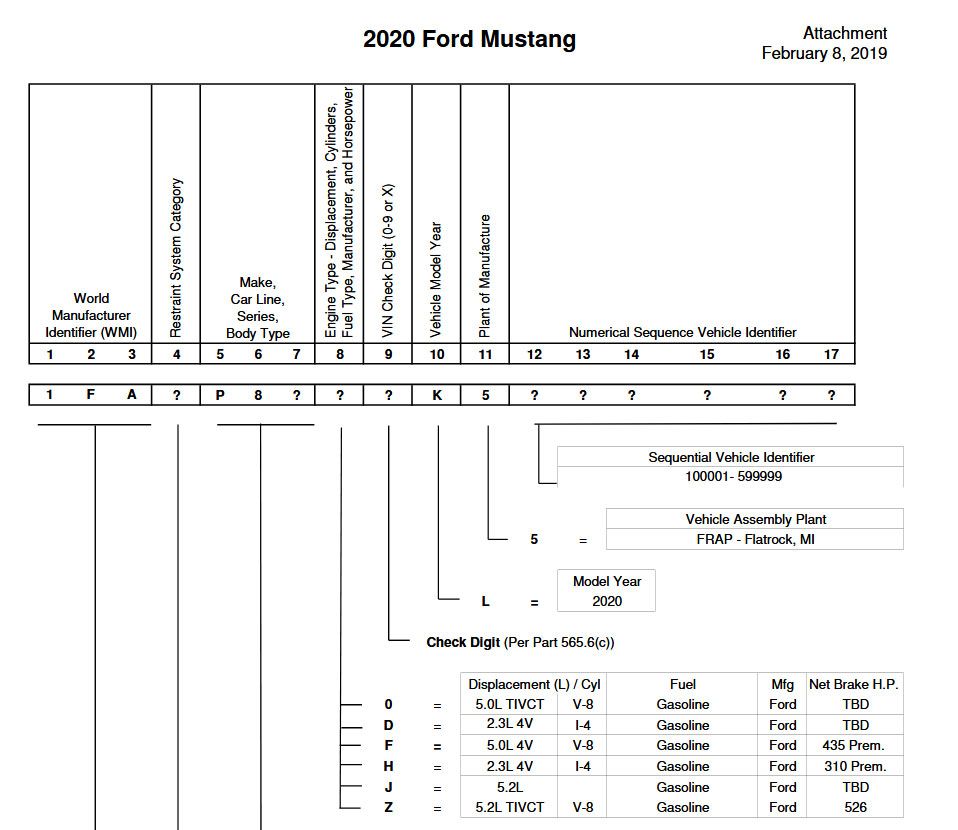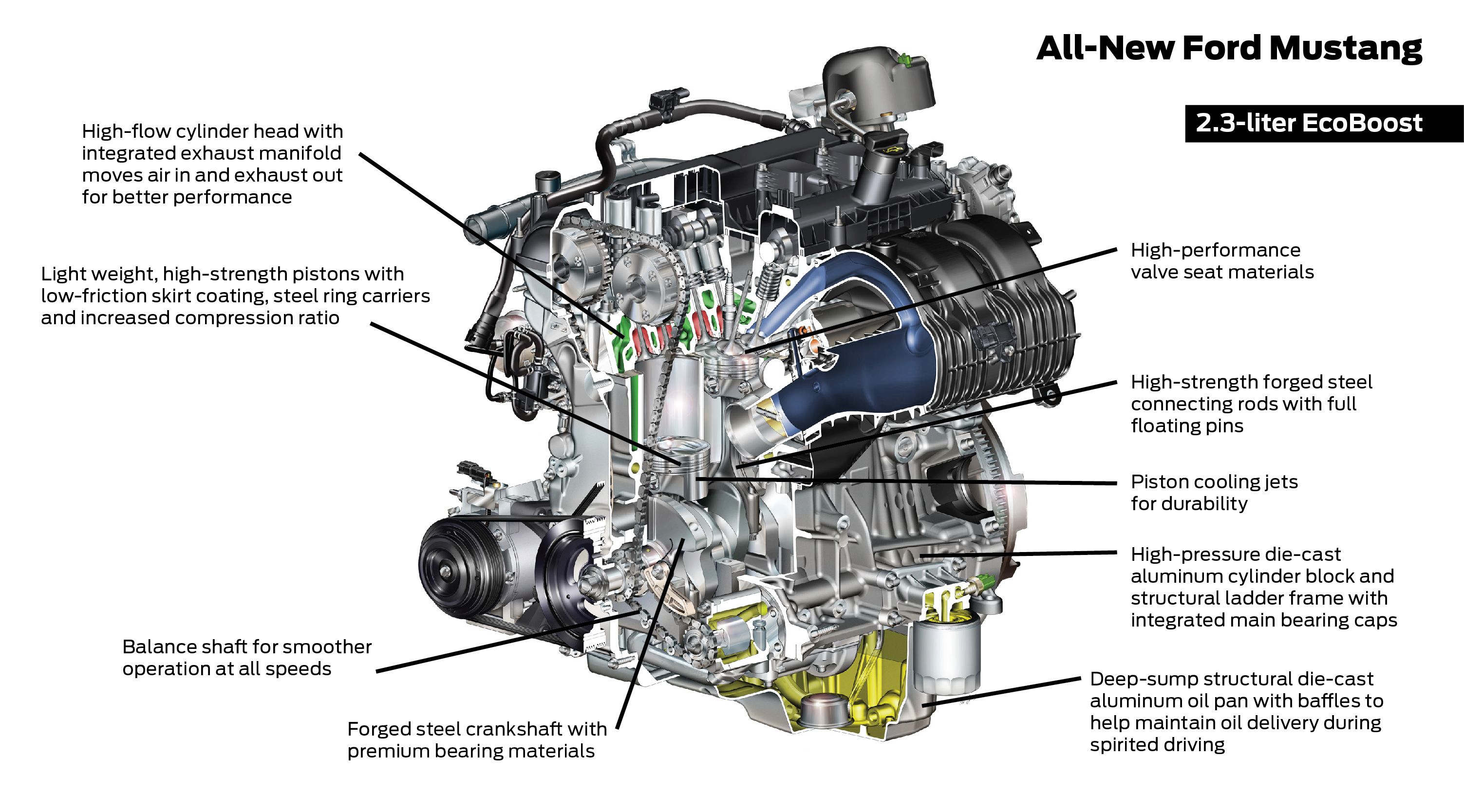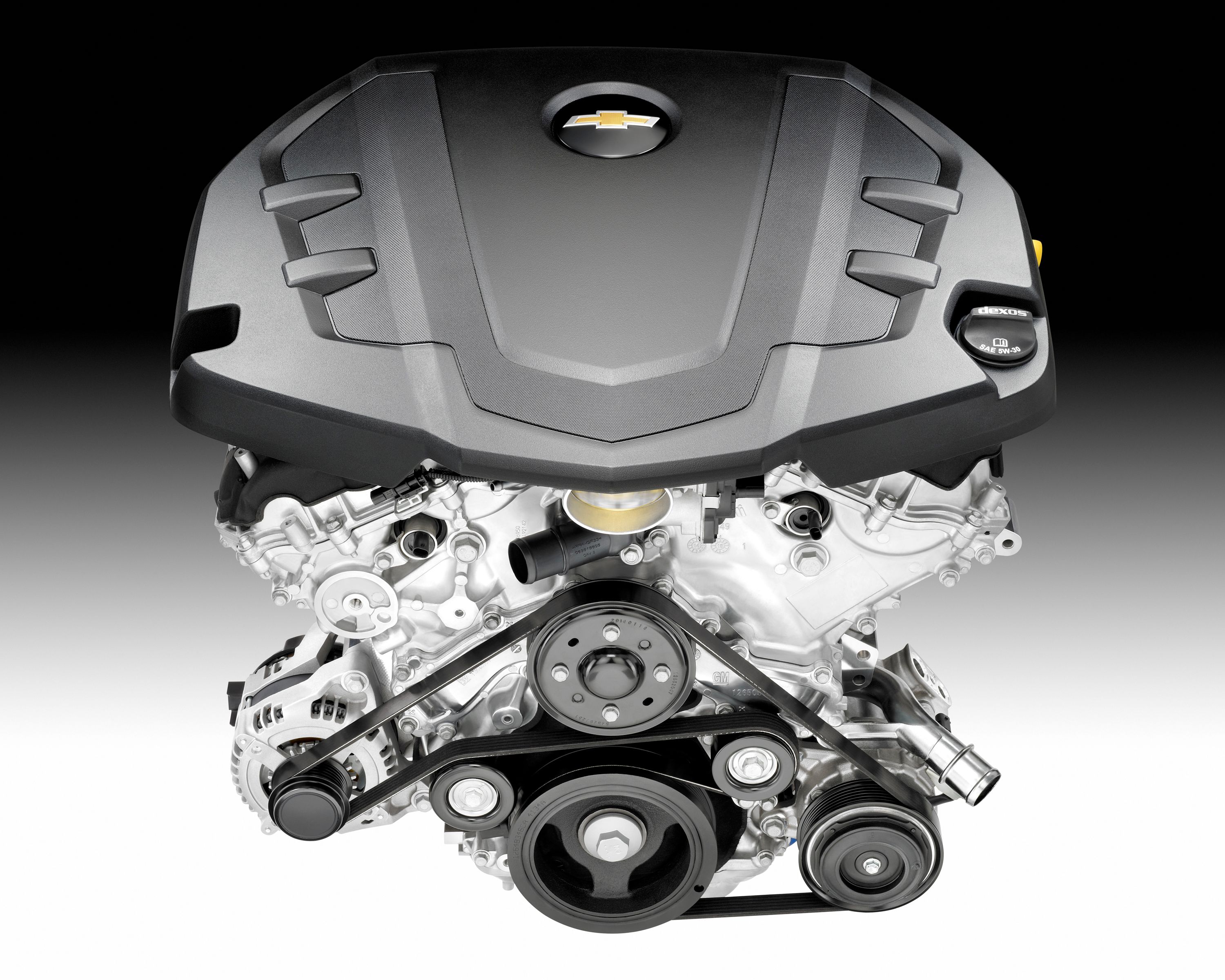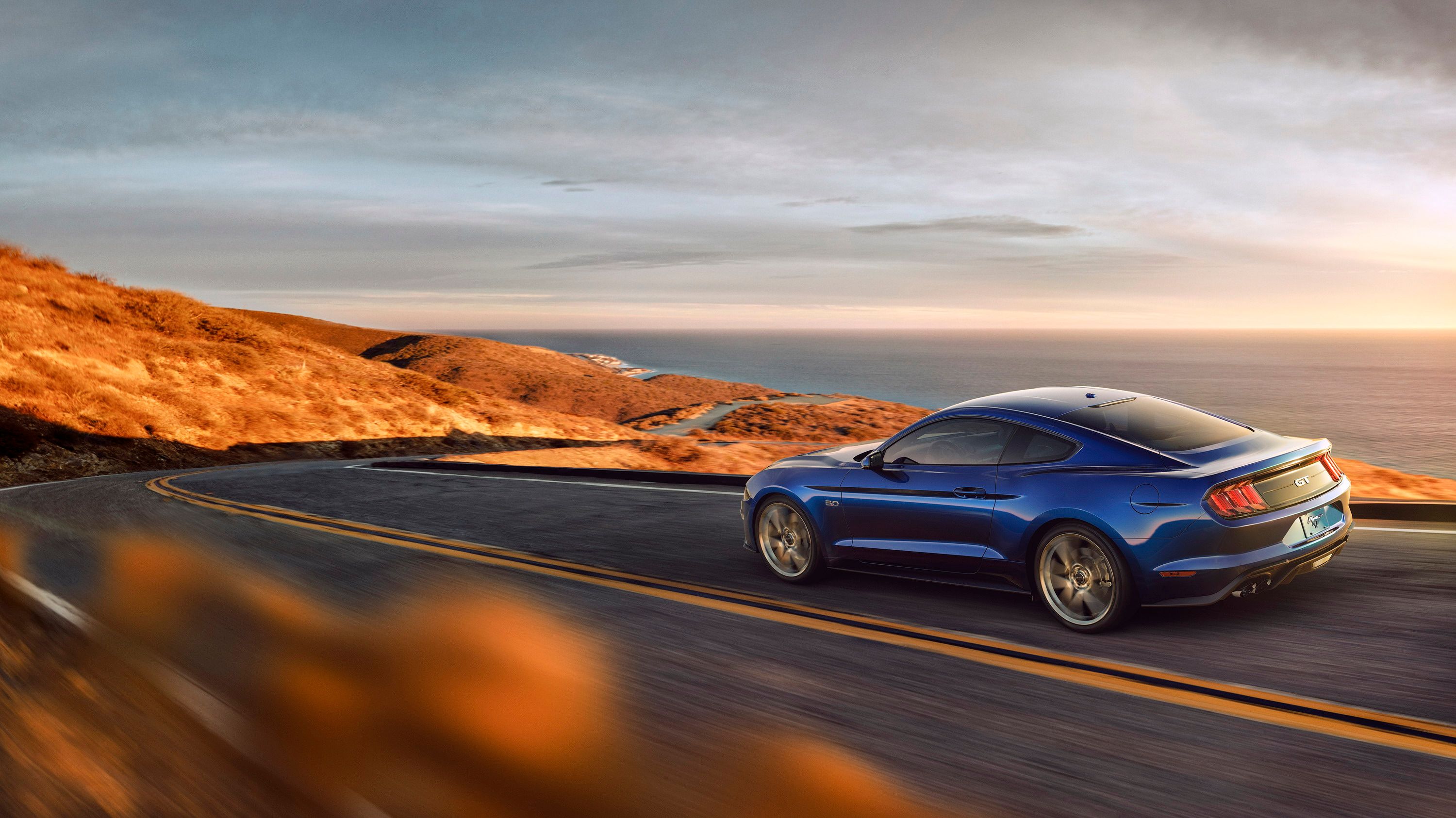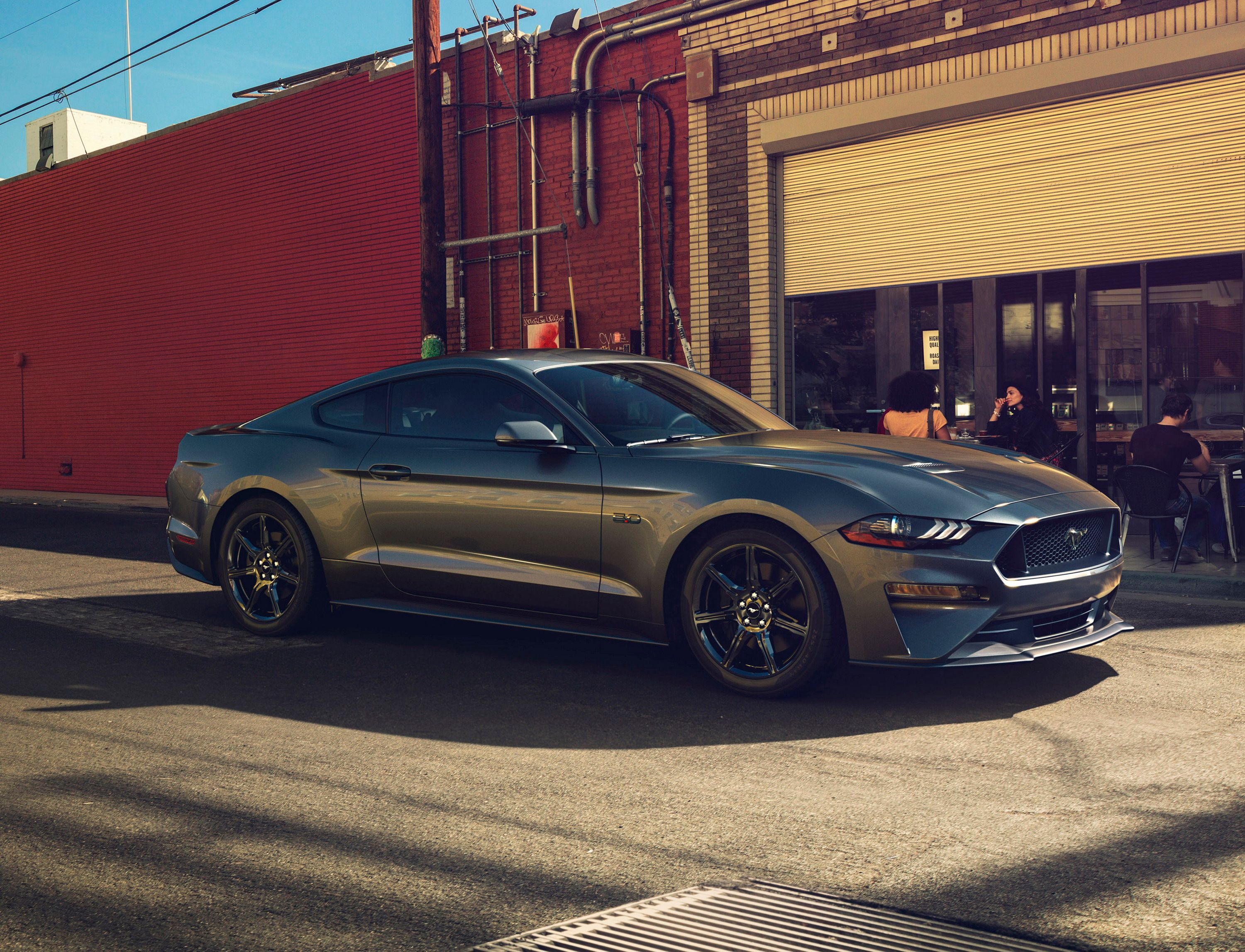Back in 2017, Ford axed the V-6 engine option for its iconic Mustang muscle car, leaving a rather sizable gap in terms of price and power between the base trim-level four-cylinder and the upgraded V-8 GT. Now, it’s looking like the Blue Oval might change that with the upcoming 2020 model year update.
Building A Bridge, Four Cylinders At A Time
This latest bit of rumor comes to us from a recent report posted by our friends at Hagerty, who managed to dig up a vehicle identification number filing from the National Highway Traffic Safety Administration (NHTSA).
When asked about the potential for expanding the Mustang’s engine options, a Ford spokesperson offered a relatively vague reply, saying the Blue Oval “is always elevating Mustang and will share more exciting news this spring.” It’s nothing specific, but it seems promising all the same.
Should Ford decide to introduce a new tune for the four-cylinder Mustang, it’ll take a spot between the current model’s V-8 and the turbocharged four-cylinder in the base-model EcoBoost. It makes sense too, especially when you consider Ford ditched the V-6 engine option a few years back, which means a stop-gap could do well to round out the Mustang’s appeal.
|
Note: Ford Mustang 2.3-liter EcoBoost engine pictured here. |
For now, Ford starts the Mustang line with a turbocharged 2.3-liter four-cylinder making 310 horsepower at 5,500 rpm and 350 pound-feet of torque at 3,000 rpm. Above the four-cylinder is a naturally aspirated 5.0-liter V-8 making 460 horsepower at 7,000 rpm and 420 pound-feet of torque at 4,600 rpm.
|
Note: Chevrolet Camaro 3.6-liter V-6 pictured here. |
Go with the Bow Tie alternative, and you’ll have the option for a turbocharged 2.0-liter making 275 horsepower at 5,600 rpm and 295 pound-feet of torque at 5,000 rpm, a naturally aspirated 3.6-liter V-6 making 335 horsepower at 6,800 rpm and 284 pound-feet of torque at 5,300 rpm, or a naturally aspirated 6.2-liter V-8 making 455 horsepower at 6,000 rpm and 455 pound-feet of torque at 4,400 rpm.
To add more credibility to the rumor, Ford is well-versed in making its 2.3-liter produce more than 310 ponies, as evidenced by the hot hatch Focus RS, which makes 350 horsepower and 350 pound-feet of torque all on its own. With that in mind, it doesn’t see too far fetched for Ford to add extra boost to the equation with the Mustang.
Meanwhile, transmission options should remain static, with either a six-speed manual or a 10-speed automatic on deck for the cog swaps.
It also makes sense for the new boostier ‘Stang to slot under the V-8 in terms of pricing. For now, the V-8 starts at $35,355, which is a whopping $8,960 more the $26,395 EcoBoost, giving Ford plenty of wiggle room to drop in the new four-banger option. However, the bigger issue will be the Bow Tie alternative, as the V-6-powered Camaro 1LT starts at $27,490. All told, a price of roughly $30,000 feels about right for the new mid-range four-cylinder Mustang.
Most enticing is the idea of some beefier track-oriented packages making the options list.
Personally, I love the idea of a high-boost Mustang. The nameplate needs more diversity, and while most of you out there will most likely prefer the V-8, other buyers might be looking to strike a balance between cost, mpg, and speed, and a 350-horsepower four-cylinder would fit the bill nicely.
What do you think about these rumors? Let us know in the comments section below.
Further Reading
Read our full review on the 2018 Ford Mustang.
Read our full review on the 2019 Chevrolet Camaro.

